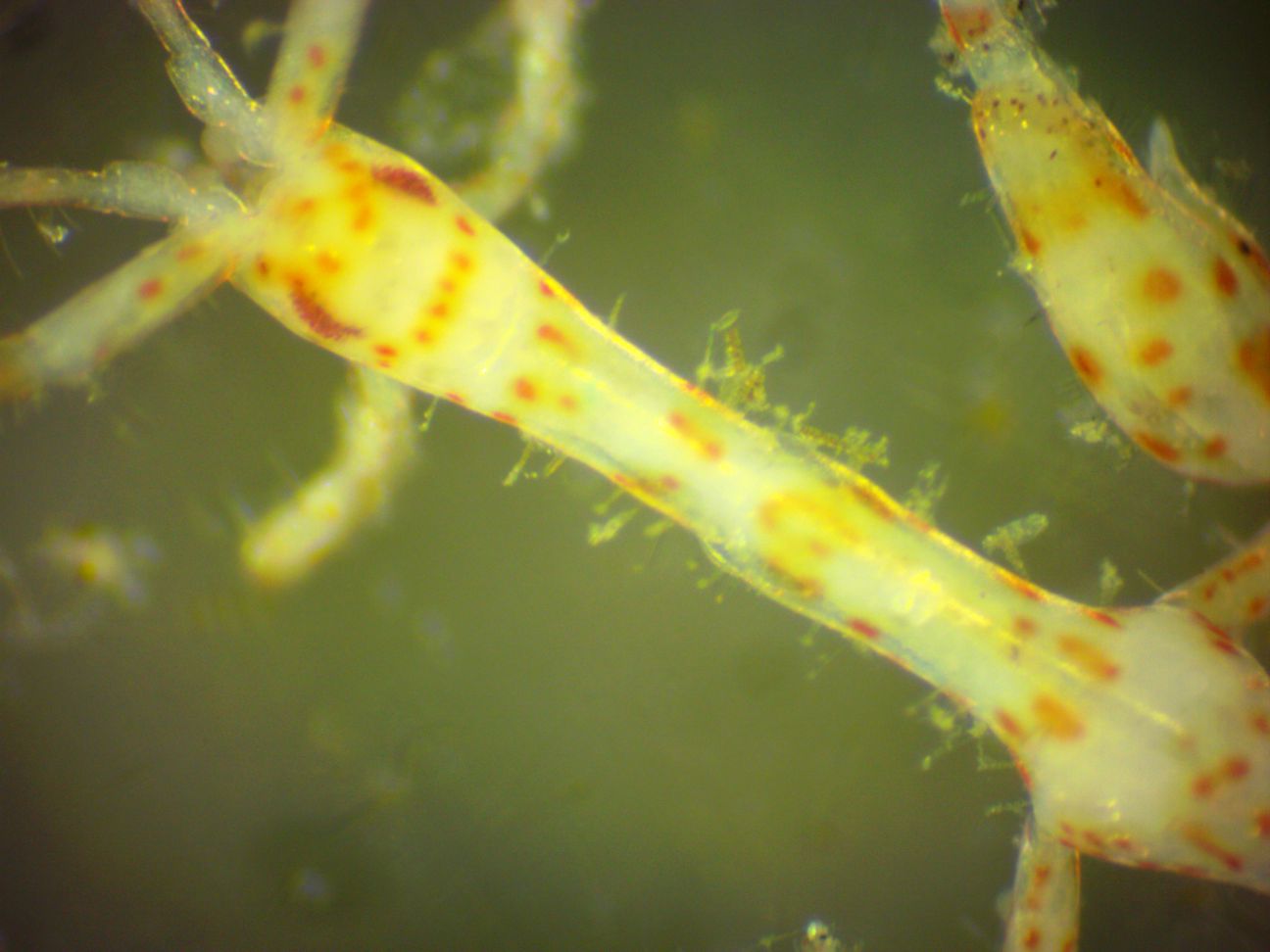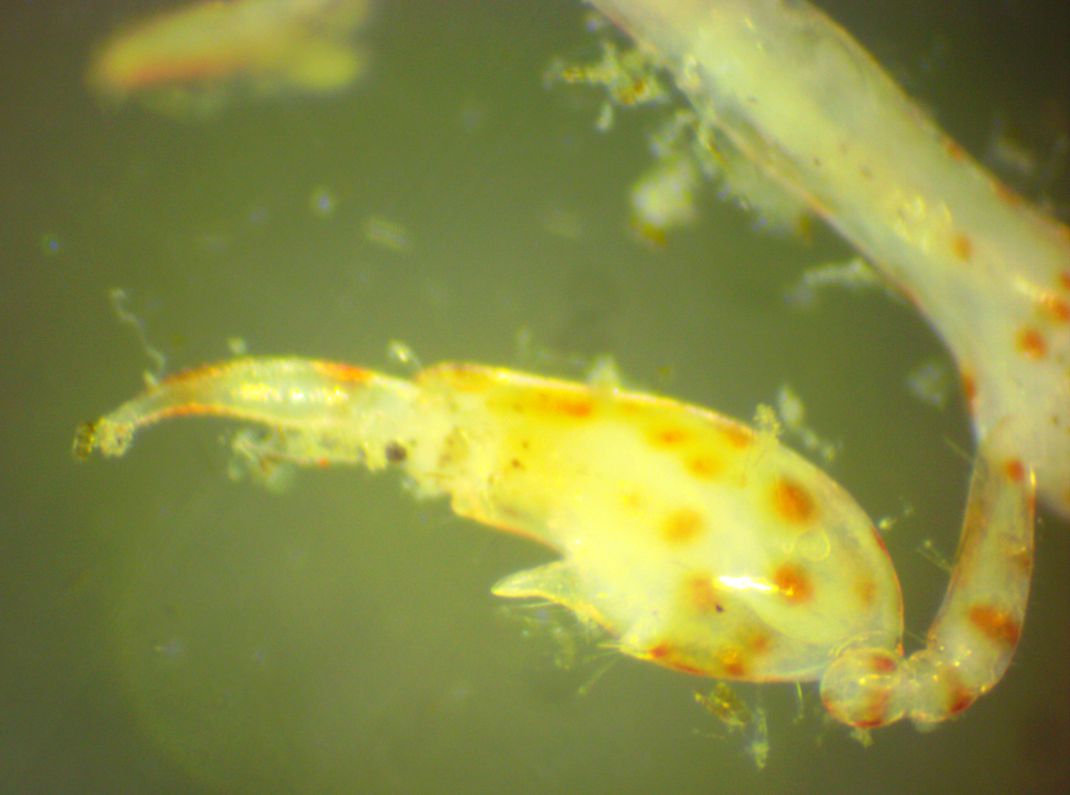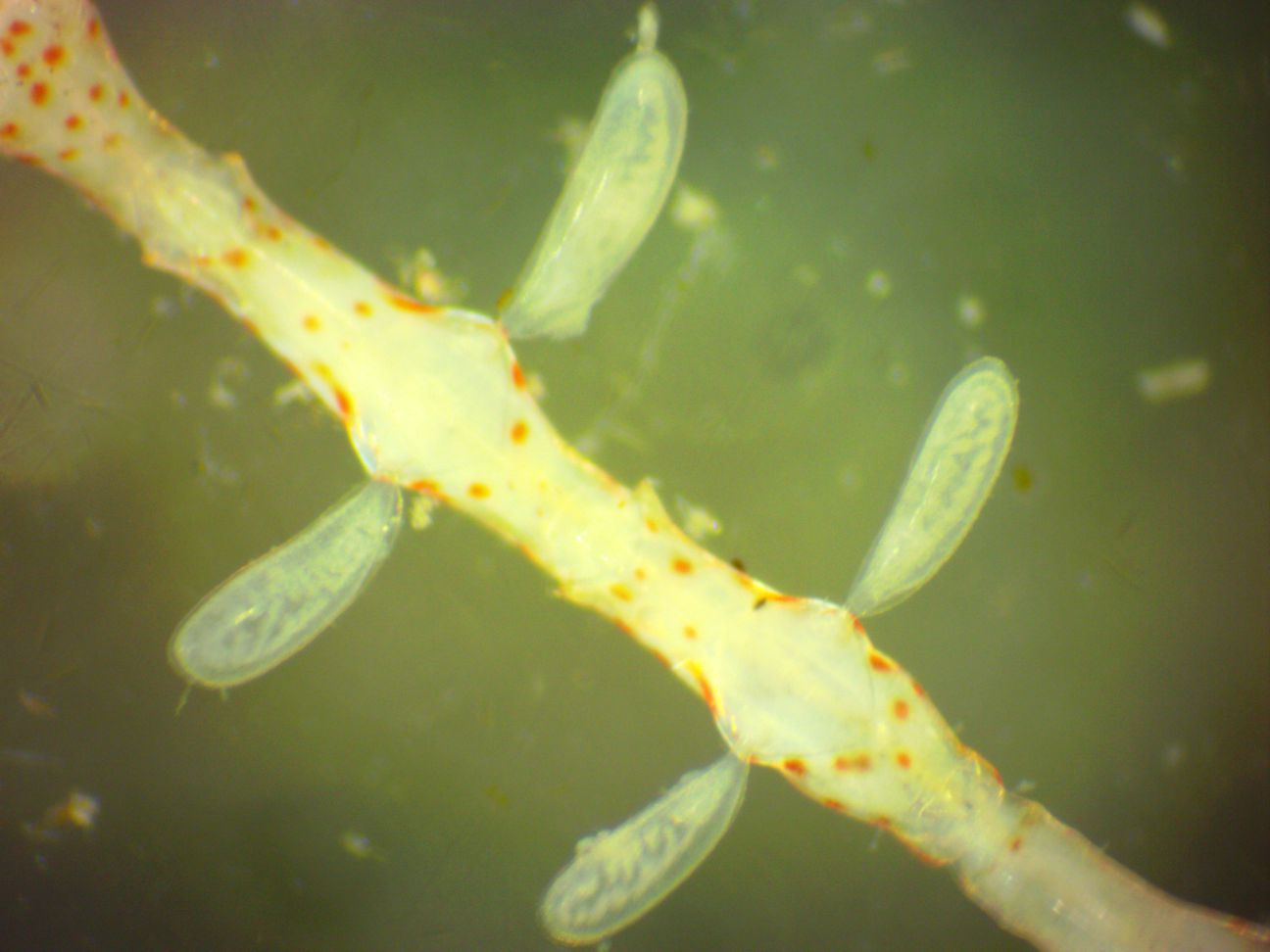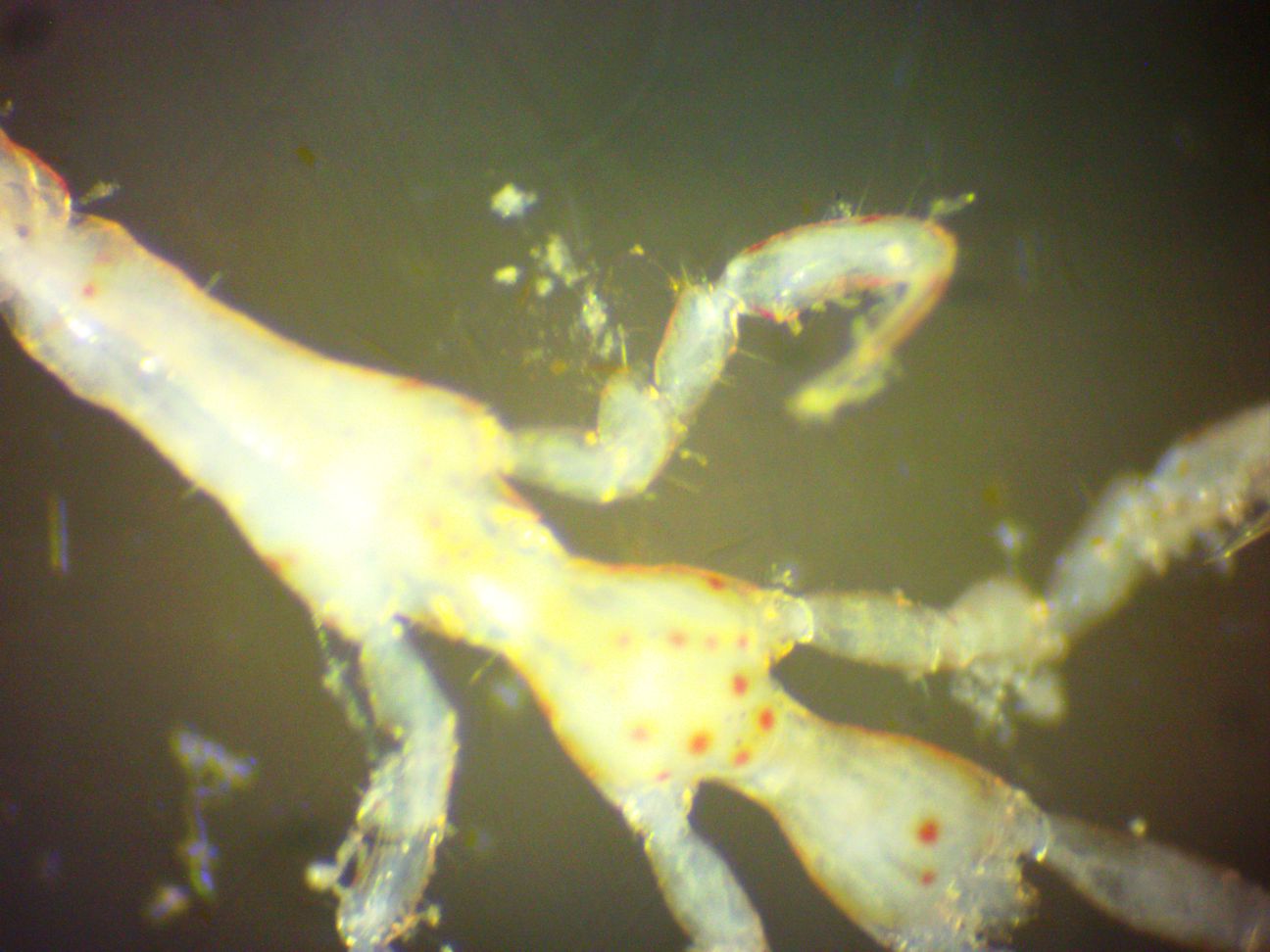Description: The head and pereonites of this caprellid have no dorsal spines, knobs, or tubercles (photo). Antenna 1 is less than half as long as the body, the articles of the antennal peduncle are much longer than wide, and the antennal flagellum is as long or longer than the 3rd article of the peduncle. The mandible has a molar process but not a palp. Gnathopod 1 is setose. Gnathopod 2 has a propodus which is less than 2/3 as wide as long. The propodus of gnathopod 2 has only one small spine at the base of the large grasping spine. There is no ventral spine between the bases of the second gnathopods. The animal has elongated (not round) gills only on pereonites 3 and 4, but not even vestigial pereopods on those pereonites. Pereonites 5-7 are short but 7 is longer than 5. Pereopods 5-7 have a propodus which is stout but at least slightly concave on the inner edge, and with a single grasping spine or tooth that is proximal to the middle of the propodus. In males, the flagellum of antenna 1 has 13 tiny articles. Pereonite 1 is not over twice as long as the head, Gnathopod 2 is attached near the rear of its pereonite, the dactyl of gnathopod 2 is not setose, and the basis of gnathopod 2 is shorter than the propodus, which has a 'thumblike' extension on its palm. This extension has been called an enormous poison spine. In females, the flagellum of antenna 1 has only 10 articles. The first several pereonites are not as elongated as in males. Gnathopod 2 is attached near the anterior end of pereonite 2 and the oostegites are on pereonites 3 and 4 along with the gills. Body length to 1.6 cm in males and 0.8 cm in females.
How to Distinguish from Similar Species:Caprella mendax has a ventral spine between the bases of the second gnathopods, and males have no thumblike extension on the propodus of gnathopod 2. Caprella drepanochir has gills which are nearly round in outline rather than elongated. Caprella kennerlyi and Caprella angusta have one or more dorsal spines on the head.
Geographical Range: Aleutian Islands to northern California, plus Japan
Depth Range: Intertidal
Habitat: On eelgrass, bryozoans, hydroids, compound tunicates.
Biology/Natural History:
This is
a common caprellid amphipod in this area. Occasionally
hydroids grow
on its body. Tolerates a wide range of salinity.
Feeds on diatoms,
or on phytoplankton which it filters out of the water with its
antennae.
It can be important in reducing the amount of diatoms encrusting
eelgrass.
Predators include the shiner perch, the lion nudibranch Melibe
leonina, and the brooding anemone
Epiactis prolifera.
| Return to: | |||
| Main Page | Alphabetic Index | Systematic Index | Glossary |
References:
Dichotomous Keys:Carlton et al., 2005
Kozloff, 1987, 1996
General References:
O'Clair and O'Clair, 1998
Scientific Articles:
Caine, E.A., 1977. Feeding mechanisms and possible resource partitioning of the Caprellidae (Crustacea: Amphipoda) from Puget Sound, WA. Marine Biology 42: pp 331-336
Caine, Edward A., 1979. Population structures of two species of caprellid amphipods (Crustacea). Journal of Experimental Marine Biology and Ecology 40:2 pp 103-114
Caine, E.A., 1980. Ecology of two littoral species of caprellid amphipods (Crustacea) from Washington, USA. Marine Biology 56: pp 327-335
Caine, E.A., 1989. Caprellid amphipod behavior and predatory strikes by fish. Journal of Experimental Marine Biology and Ecology 126:2 pp 173-180
Caine, Edsel A., 1991. Reproductive behavior and sexual dimorphism of a caprellid amphipod. Journal of Crustacean Biology 11:1 pp 53-63
Norton, T.A. and M.R. Benson, 1983. Ecological interactions between the brown seaweed Sargassum muticum and its associated fauna. Marine Biology 75: pp 169-177
Web sites:
General Notes and Observations: Locations, abundances, unusual behaviors:

The dorsal side of the head and pereonites
have no spines nor tubercles.
Photo of a male by Joanna Cowles, July 2014

Gnathopod
2 of males has a large 'thumb' or poison spine on the propodus,
and the dactyl
is not setose.
Photo by Joanna Cowles, July 2014

The gills, on pereonites
3 and 4, are elongated. Photo of a male by Joanna Cowles,
July 2014

A dorsal view of the posterior of the animal. Note that the dactyls
are curved. Photo by Joanna Cowles, July 2014
Authors and Editors of
Page:
Dave Cowles (2014): Created original page
CSS coding for page developed by Jonathan Cowles (2007)
Salish Sea Invertebrates web site provided courtesy of Walla
Walla University
